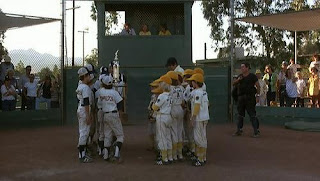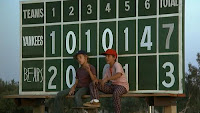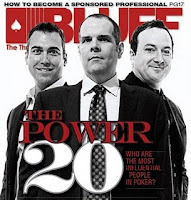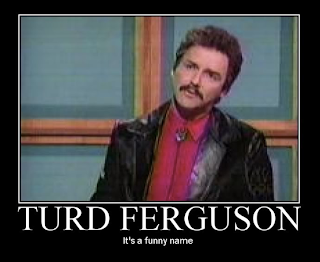Blom By One Big Blind? Couldn’t Have Scripted That
 Last night the Oscars were awarded. Was a bit distracted, though I did manage to watch some of the show with Vera.
Last night the Oscars were awarded. Was a bit distracted, though I did manage to watch some of the show with Vera. Was flipping back to that exciting Knicks-Heat game for much of it, while also following the Sunday Warm-Up on PokerStars for which I wrote a recap. (Infected a bit by all the movie talk, I had a little fun in the wrap by referring to a number of films that had won Best Picture over the years -- check it out.)
Early in the evening I also found myself keeping an eye on that latest “SuperStar Showdown” involving Viktor “Isildur1” Blom and the qualifier Attila “DodgyFish72” Gulcsik. Gulcsik had prevailed in an $11 satellite to win the right to battle the swingy Swede.
Whereas the usual format for the Showdowns calls for Blom and his opponent to play $50/$100 blinds and bring at least $150,000 of their own money with which to play, in this special version the game was played with $5/$10 blinds and Gulcsik was staked with $15,000. Gulcsik would win whatever he had left from the original stake after 2,500 hands versus Blom, plus any profits, if there were any. Also, if either player managed to win all of the other’s $15K, that player would earn an additional $10,000.
I had the four tables of heads-up, no-limit hold’em open for a while early on, watching as Blom surged to a more than $10,000 lead by the halfway point. I wasn’t watching as closely during the second half of the match, but noticed folks tweeting that DodgyFish72 was closing the gap.
As Change100 recounts in her recap of the match, a flurry of all-in hands mostly won by Gulscik had brought him within just under $2,500 with 200 hands to go. Then came a couple more $1K-ish pots that went the qualifier’s way, and suddenly the pair were nearly even.
On the very last hand -- the 2,500th played -- Blom open-shoved from the button over the top of the $1,600 or so Gulscik had at that table, and DodgyFish72 folded. As it turned out, the $10 big blind Blom grabbed on that hand turned out to be the difference in the match, as the final tally showed Isildur1 just $10 ahead.
After being ahead by more than 1,000 big blinds, Blom won the match by one?!? Incredible.
 Maybe it was the Oscars -- or Change100’s recap, in which she refers to the way the match ultimately failed to adhere to the usual cinematic formula of the underdog winning in the end -- but when contemplating what had transpired in the Showdown I found myself thinking about one of my all-time favorite movies, The Bad News Bears.
Maybe it was the Oscars -- or Change100’s recap, in which she refers to the way the match ultimately failed to adhere to the usual cinematic formula of the underdog winning in the end -- but when contemplating what had transpired in the Showdown I found myself thinking about one of my all-time favorite movies, The Bad News Bears.Saw this one in the theater when I was a little leaguer myself. Loved it then, and still love it today. I remember my parents being a bit surprised at the language used in the PG-rated flick, but for me getting to hear the kids say those words was just one of the film’s many excellent attributes.
If you haven’t seen the movie before and want to, I’ll warn you now I’m about to give away the ending. (And by the way, I’m talking about the original 1976 film directed by Michael Ritchie and starring Walter Matthau and Tatum O’Neal, not the terribad remake from 2005 with Billy Bob Thornton.)
In the film, Matthau plays Morris Buttermaker, an alcoholic and ex-minor leaguer who gets recruited (coerced, really) to coach the Bears, a squad made up of players not good enough to make the other teams in the league. In their first game they fall behind the Denny’s team (named the Yankees, natch) by 26 runs before Buttermaker forfeits.
Eventually Buttermaker brings in a couple of ringers to join the team, the hard-hitting Kelly (Jackie Earle Haley) and a girl pitcher Amanda (O’Neal) who is the daughter of an ex-girlfriend. Bolstered by the new additions, the Bears improve dramatically and make it all of the way to the championship game versus the hated Yankees.
 A ton of fun stuff along the way, including a perhaps obvious (but no less important) lesson about adults being overly competitive when playing out their desires and needs through the kids. Along those lines, Buttermaker has a revelation of sorts during the championship game and near the end pulls the starters in order to give the scrubs some time on the field. The move causes the Bears to fall behind 7-3 heading into the bottom of the last inning, thereby setting up the film’s awesome climax.
A ton of fun stuff along the way, including a perhaps obvious (but no less important) lesson about adults being overly competitive when playing out their desires and needs through the kids. Along those lines, Buttermaker has a revelation of sorts during the championship game and near the end pulls the starters in order to give the scrubs some time on the field. The move causes the Bears to fall behind 7-3 heading into the bottom of the last inning, thereby setting up the film’s awesome climax.The Yankees record the first two outs with little trouble, then a walk, a successful bunt, and another walk load the bases for Kelly. The Yankees actually try to issue an intentional walk to the dangerous Kelly (and give the Bears a run), but he lunges across the plate to hit one of the outside pitches anyway, driving it into the outfield and to the wall.
The music swells as three runs score, then Kelly charges toward the plate. But the relay throw arrives a moment before he does and... he’s... out.

The Bears -- like DodgyFish72 -- come up just short.
But as Change100 notes at the end of her Showdown recap, “even though David didn’t defeat Goliath, it sure feels like he won.” By film’s end, it is obvious that being a Bear is much, much preferable to being a Yankee. “Why are we celebrating?” asks one of the kids in the clubhouse as Buttermaker surprisingly delivers them beers from his cooler (no shinola!).
“Because you should be damn proud of yourselves,” explains the coach.
As should DodgyFish72, the one with whom -- like the Bears -- the great majority of us can identify with much more readily than with the other guy. Of course, while technically he “lost” he still gets to keep $14,990, a sweet consolation prize for sure.
I imagine he might use some of that to buy himself a beer or two.
Labels: *high society, Change100, Isildur1, PokerStars, SuperStar Showdown, The Bad News Bears, Viktor Blom











































